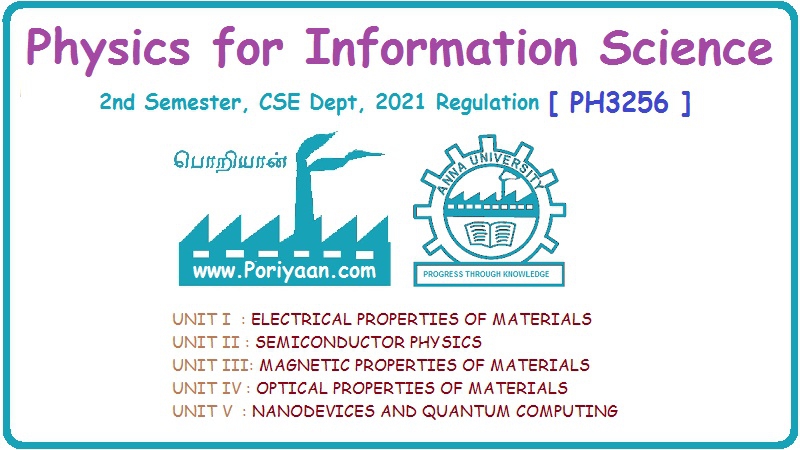Physics for Information Science: Unit IV: Optical Properties of Materials
Photo-Electric Effect
Optical Properties of Materials
In metals, there are large number of free electrons. These free electrons can more freely to a highest energy level, so called Fermi energy level EF.
PHOTO-ELECTRIC
EFFECT
In
metals, there are large number of free electrons. These free electrons can more
freely to a highest energy level, so called Fermi energy level EF.
No electron at EF can escape from the metal because of the presence
of an energy barrier at the surface of the metal. If an electron has to escape
beyond the Fermi energy level, we have to supply some additional energy in
order to overcome the energy barrier (EB) of the metal. This
additional energy required to make an electron to escape from the metal surface
is called work function, denoted by ϕ. [Fig. 4.10].
ϕ = EB - EF
The
additional energy required to make an electron to escape from a metal can be
supplied in many waves, viz.
(i)
In the form of heat, and this type of emission is called thermionic emission.
(ii)
In the form of light, which is called photo-electric emission.
(iii)
In the form electricity, so called Schottky effect and
(iv)
When the energy is supplied by energetic charged particles, it is called
secondary emission.
Out
of these four types of emission, let us discuss briefly about the
photo-electric emission.
Photo-electric emission
Einstein
proposed a quantum theory on the basis that, "when a photon collides with
an electron in a metal, it transfers the energy to the electron in an "all
(or) none" process", i.e., either the photon gives out its total
energy (hv) to the electron (or) no energy is transferred to the electron.
According
to Einstein, the total energy of the photon, which is completely given to the
electron is used in two ways viz,
1.
A part of energy is used to eject the electron from the surface of the metal.
This energy is known as Photo-electric work function (ϕ).
2.
The other part of energy is supplied to the electron as the kinetic energy﴾1/2 mv2﴿for it to move with the
velocity 'v'.
Total
energy of the photon (E) = ϕ+ 1⁄2 mv2
…...
(1)
Equation
(1) is called Einstein's photo-electric equation.
Special Cases
Case (i):
Suppose if the energy of the incident photon is in such a way that it is used
only to eject the electron and not to make it move means, the kinetic energy of
the electron becomes zero.
Equation
(1) becomes, ……..(2)
Where
V0 is called threshold frequency.
and
ϕ0 is the work function of the metal.
Case (ii):
Suppose if the energy of the incident photon ejects the electron and makes it
to move with maximum velocity (Vmax) means, equation (1) becomes
Since
ϕ0 = hv0 we can write
……..(3)
As
the work function is the energy supplied it is generally expressed in eV. The
work functions of some of the metals are listed below for reference.
Physics for Information Science: Unit IV: Optical Properties of Materials : Tag: : Optical Properties of Materials - Photo-Electric Effect
Related Topics
Related Subjects
Physics for Information Science
PH3256 2nd Semester CSE Dept | 2021 Regulation | 2nd Semester CSE Dept 2021 Regulation
